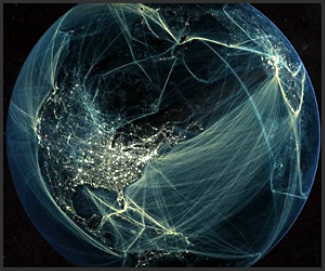 Bollywood actor and filmmaker Aamir Khan Tags: abortion/reproduction, demography/population, gender, marriage/family, violence, domestic violence, gendercide, india, infanticide, patriarchy, sex ratio, subtitles/CC, 61+ mins Year: 2012 Length: 64:29 Access: YouTube Summary: The cultural preference for sons in India and China is well known and widely discussed, and demographers observe that both countries have distorted sex ratios, due in part to a rise in sex selective abortions since the 1980s. According to estimates based on census and sample registration data, in mainland China the sex ratio stood at 120.6 boys per 100 girls in 2008, while it stood at 110.6 boys per 100 girls in India for 2006-2008. In some Chinese provinces and Indian states, the ratios are even higher than these national-level estimates. For instance, in Jiangxi, Anhui and Shaanxi provinces in China the sex ratios are 137.1, 132.2 and 132.1, respectively, and in India's northern states of Punjab, Haryana and Rajasthan, the sex ratios are 119.6, 118 and 114.9, respectively. This video is from the Indian television talk show Satyamev Jayate and takes on the issue of sex selective abortions in India. The video can be used to supplement discussions on distorted sex ratios. In particular, it can be used to highlight the domestic violence that often accompanies the preference for sons but tends to be neglected in the demographic literature, given its tendency to focus exclusively on numbers and trends. From about the 6:10 mark to about 19:30 minutes, the audience hears the testimony of two women who were coerced into having sex selective abortions and have faced considerable harassment from their husbands and in-laws for their failure to have sons. Instructors can further use the video to begin a discussion about how the problem of imbalanced sex ratios can be addressed. Since patriarchal notions that men are more valuable than women underlie the trend toward coerced sex selective abortion, a truly systemic approach will likely include an attempt to dismantle patriarchy itself. Submitted By: Manjistha Banerji
8 Comments
 Tags: demography/population, environment, food/agriculture, globalization, inequality, rural/urban, anthropocene, great acceleration, subtitles/CC, 00 to 05 mins Year: 2012 Length: 3:29 Access: YouTube Summary: In sparkling electric blue, this narrated visualization illustrates the impact humans have had on the Earth's ecosystems from the time of the industrial revolution to the present. Referring to a new geological epoch, the narrator boldly announces, "Welcome to the anthropocene." The anthropocene is marked by the decisive role humans now play in shaping the state, dynamics and future of the Earth system. Among other indicators, scientists point out that anthropogenic processes now account for more sediment transport than natural processes, such as the erosion from rivers. Humans have also measurably altered the composition of the atmosphere, oceans, and soils, as well as the cycles associated with elements such as carbon, nitrogen, and phosphorus. The more than seven billion of us who currently reside on the planet now breath a chemically altered atmosphere of our own making, and we are witnessing the spread of oceanic dead zones. From a sociological standpoint, the adjective "anthropogenic," which simply denotes something that is produced by humans, is imprecise. It is not the mere presence of billions of homo sapiens which has altered the Earth's systems; rather, it is the way homo sapiens interact with the Earth's systems—our social processes. The clip works well as a way to enter into a discussion about environmental sociology. Specifically, one could easily draw on it to highlight the tension between understanding how changes in the environment get framed as problems by scientists, media, and other social actors, and how certain environmental changes have a real ontological status, irrespective of that framing. Submitted By: Lester Andrist  7 billion: how your world will change Tags: demography/population, globalization, inequality, rural/urban, thomas robert malthus, subtitles/CC, 00 to 05 mins Year: 2010 Length: 2:58 Access: YouTube Summary: This clip, although made in 2010, examines the world as we hit a global population of 7 billion people (October 2011). Topics explored in the video include the impact of having 7 billion inhabitants living on the globe, the increasing length of the human life span, the unbalanced human consumption of scarce resources, and unequal living conditions. I include this video in my lecture on stratification, specifically in reference to Malthus's view of favoring inequality as a form of population control. It also can be used when covering demographics. The clip was created by National Geographic magazine as part of their 2011 year-long series on world population; additional resources are available on their website. Click here for another clip on The Sociological Cinema that contextualizes issues of global population and inequality. Submitted By: Rachel Sparkman  Multi-racial and multi-ethnic identities are on the rise Tags: children/youth, community, demography/population, immigration/citizenship, marriage/family, multiculturalism, nationalism, race/ethnicity, social construction, 00 to 05 mins Year: 2011 Length: 5:16 Access: New York Times Summary: This video accompanies a New York Times article about mixed race students on college campuses in America. Profiling students at the University of Maryland, young adults speak out about multi-racial and multi-ethnic identities, relationships, and "racial distinctions of behavior" (as one student puts it). Driven by increasing immigration and interracial marriages, young people today represent a significant and unprecedented demographic shift in the United States. Students respond to this changing environment by raising awareness about multi-racial and multi-ethnic issues and creating a safe space for a multi-cultural community on college campuses. This clip would be useful for initiating class discussions around racial and ethnic identities, social constructions of race, as well as a critical conversation around racial and ethnic behaviors, interactions and performances (stemming from the student's remark about "racial distinctions of behavior"). Finally, students can use the clip to contemplate the future of race and ethnicity in America, and the potential for change. Do students think racism will disappear as America becomes increasingly multi-racial and multi-ethnic? Submitted By: Valerie Chepp  What if the world were a village of 100 people? Tags: community, demography/population, globalization, inequality, methodology/statistics, subtitles/CC, 00 to 05 mins Year: 2010 Length: 3:15 Access: YouTube Summary: Updated for 2010, this short clip paints a portrait of the earth based on if the world were comprised of a 100-person community. Given that large numbers can be difficult to put into perspective (and thus important information about the world runs the risk of becoming meaningless or unremarkable), this video illustrates for students how the global community fares on such indicators as hunger, religious affiliation, literacy, wealth, education, government expenditures, among many others. The clip is not only useful for helping students understand global inequality and differences, but it also reminds students of the enormity of their own social privilege relative to the majority of the world. Submitted By: Valerie Chepp  Hans Rosling examines global trends in health and wealth Hans Rosling examines global trends in health and wealth Tags: demography/population, globalization, health/medicine, inequality, methodology/statistics, political economy, data visualization, global development, income, life expectancy, 00 to 05 mins Year: 2010 Length: 4:48 Access: YouTube Summary: This clip plots the health and wealth of 200 countries over 200 years. Animating data in real space, Hans Rosling explains how global health and wealth trends have changed since 1810. Despite persistent and extreme inequalities (both across countries and within countries), Rosling's data point to a closing gap between Western and non-Western countries, fostering a "converging world" perspective. He projects that, in the future, everyone can "make it" to the healthy and wealthy plots on the graph. This clip might be useful in a statistics, demography, globalization, or health/medical sociology class, as it helps students (particularly the novice statistician) to visualize data trends and illustrates for students the very cool things that can be done with statistical data. Instructors of medical sociology, health, and inequality might also facilitate a discussion about social factors that might inhibit or foster Rosling's optimistic portrait of the future. This clip might work well with another Hans Rosling's clip, in which he uses data visualization to illustrate global changes since the 1960s related to fertility, life expectancy, child survival and poverty by nation (and region). Submitted By: Valerie Chepp  Children sleeping in a cramped shanty in a Manila slum / Reuters Children sleeping in a cramped shanty in a Manila slum / Reuters Tags: abortion/reproduction, class, demography/population, government/the state, inequality, political economy, philippines, poverty, fertility, contraception, 11 to 20 mins Year: 2008 Length: 12:26 Access: YouTube Summary: This news report from Al Jazeera English focuses on the growing population in the Philippines. "It's a population explosion," the reporter begins, "Every year two million babies are born in the Philippines." The report suggests that one important reason for the growth is the government's pronatal policies, and specifically, its failure to promote contraception. The clip highlights the role governments play in demographic realities and fertility in particular. The clip suggests connections between population growth and economic development and would work well in a class on demography or development. Submitted By: Lester Andrist  Tags: demography/population, globalization, child mortality, infant mortality, child survival, data visualization, income, global development, subtitles/CC, 11 to 20 mins Year: 2006 Length: 19:50 Access: Ted Talks Summary: This clip is taken from the TED Talks, a non-profit which hosts presentations related to ideas of technology, entertainment, and design. In this clip, Hans Rosling uses innovative data visualization tools to illustrate global changes since the 1960s related to fertility, life expectancy, child survival and poverty by nation (and region). Specifically, Rosling underscores the difference between popular perceptions of the so-called third world and evidence from census data. The clip would be useful for a demography or an introductory sociology class, as it demonstrates how statistical data often provides insights about the world which contradict common sense. An updated and visually interesting demonstration of the relationship between life expectancy and wealth by nation can be found in a newly released preview for Rosling's upcoming documentary, The Joy of Stats. Note, this clip might work well with Danah Boyd's talk at Gov. 2.0 Expo 2010, where she notes that data is not enough in itself but must be appropriately analyzed. Submitted By: Lester Andrist |
Tags
All
.
Got any videos?
Are you finding useful videos for your classes? Do you have good videos you use in your own classes? Please consider submitting your videos here and helping us build our database!
|
 RSS Feed
RSS Feed
